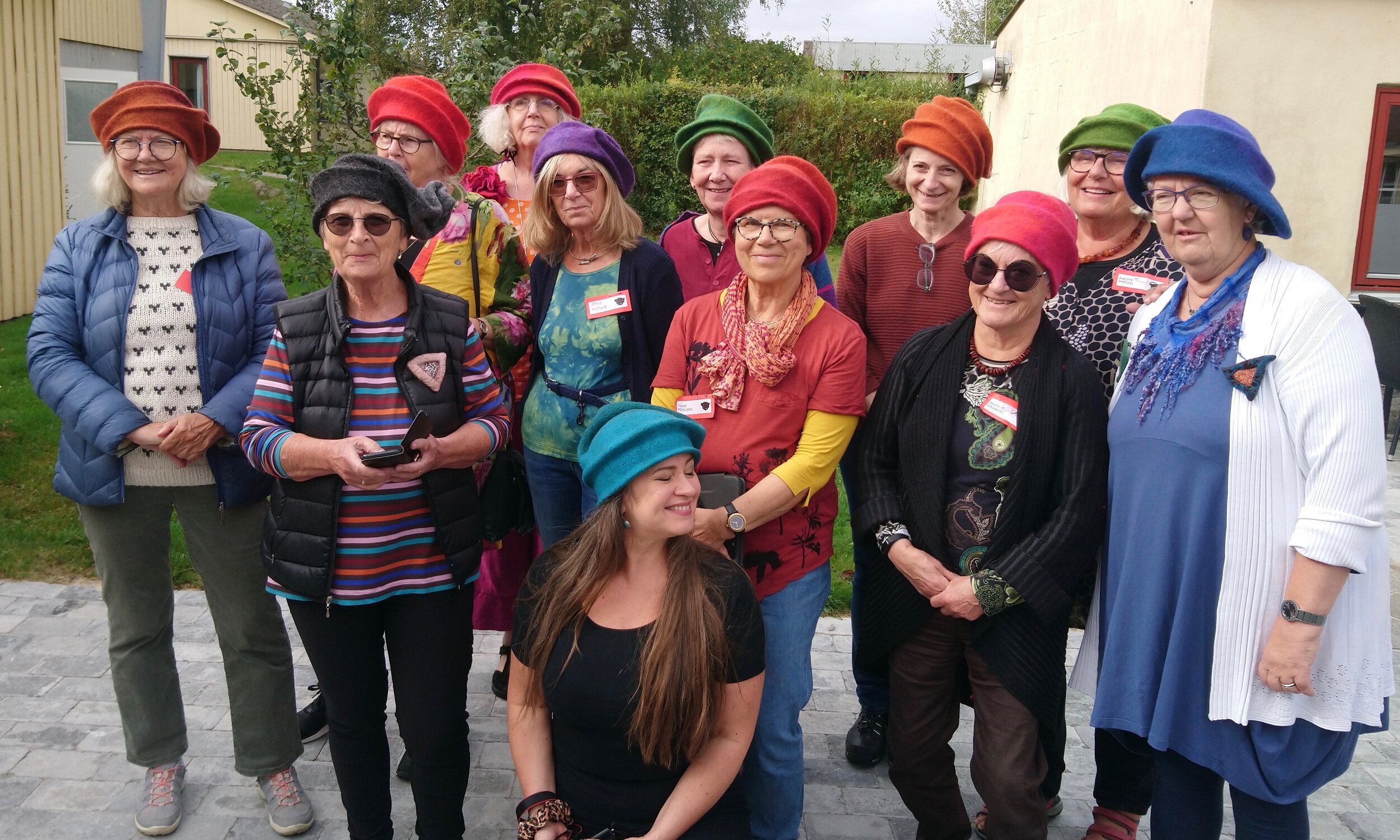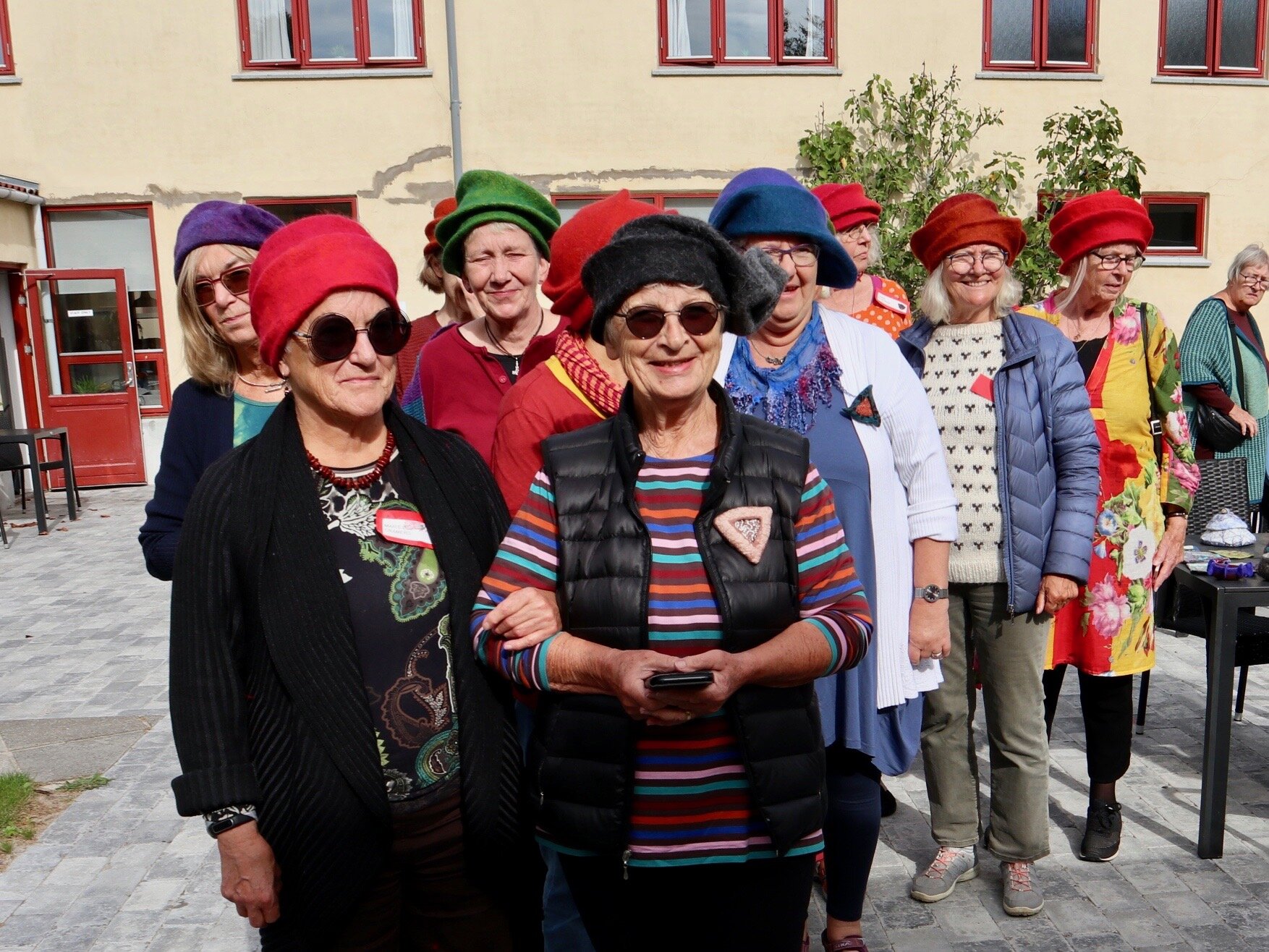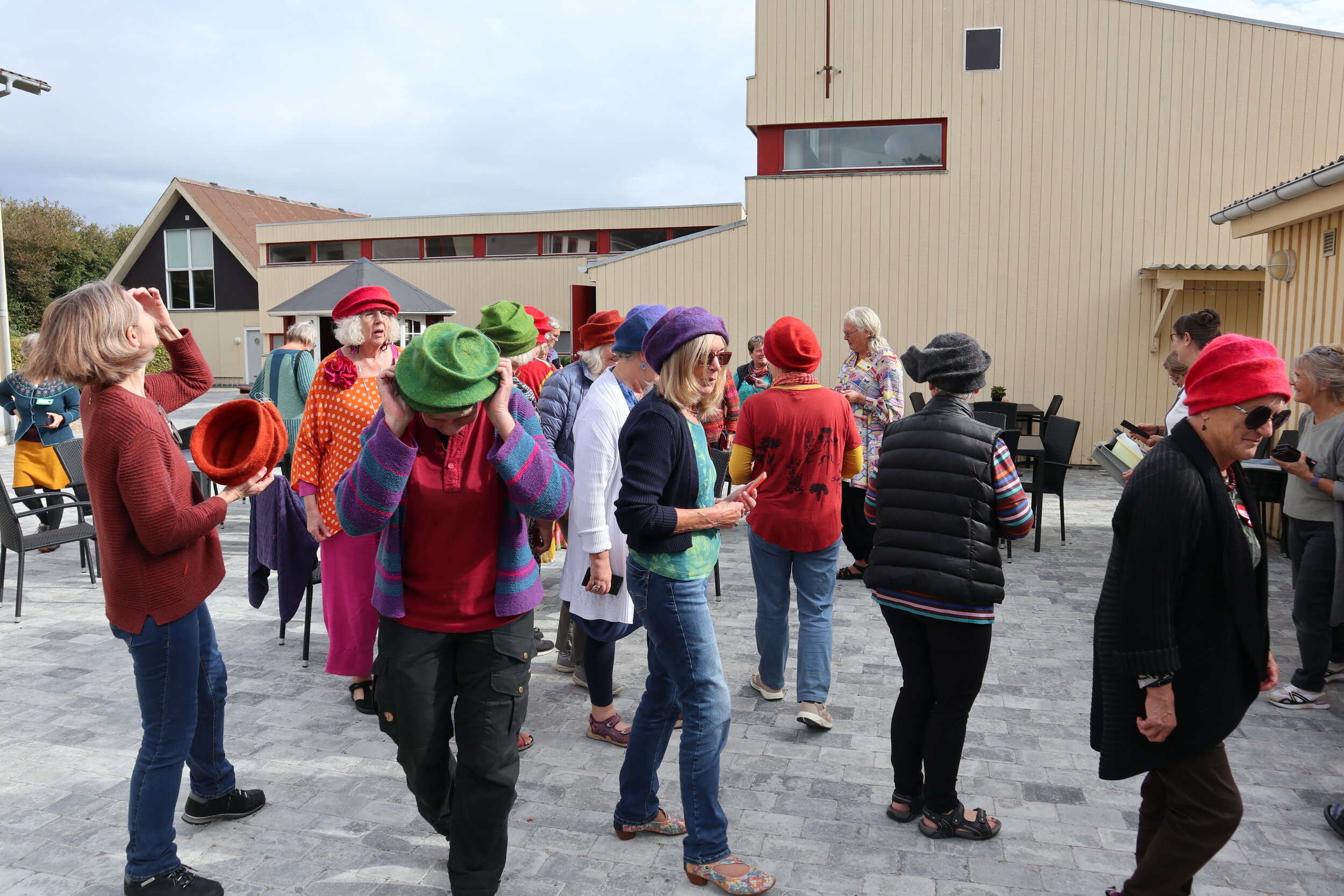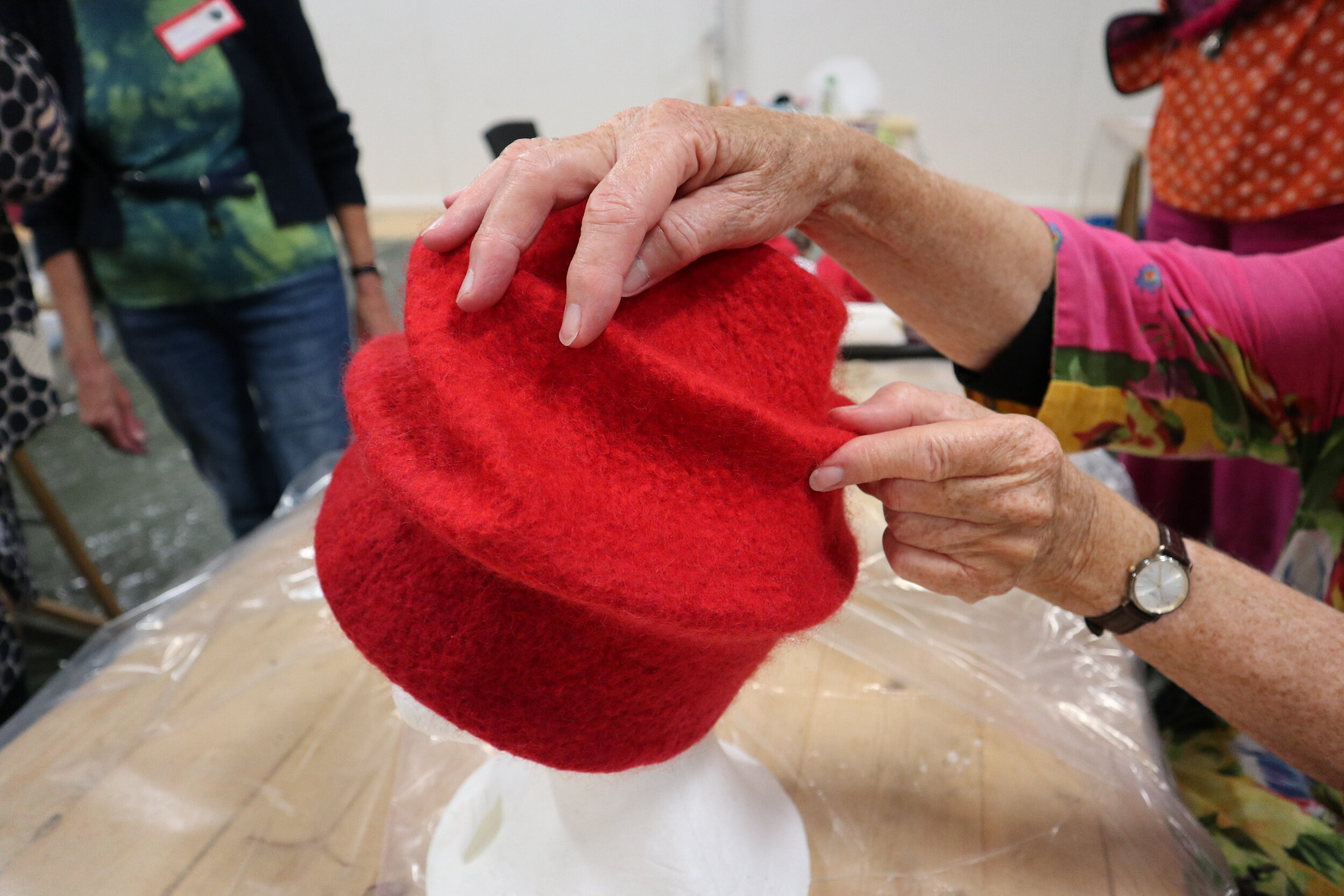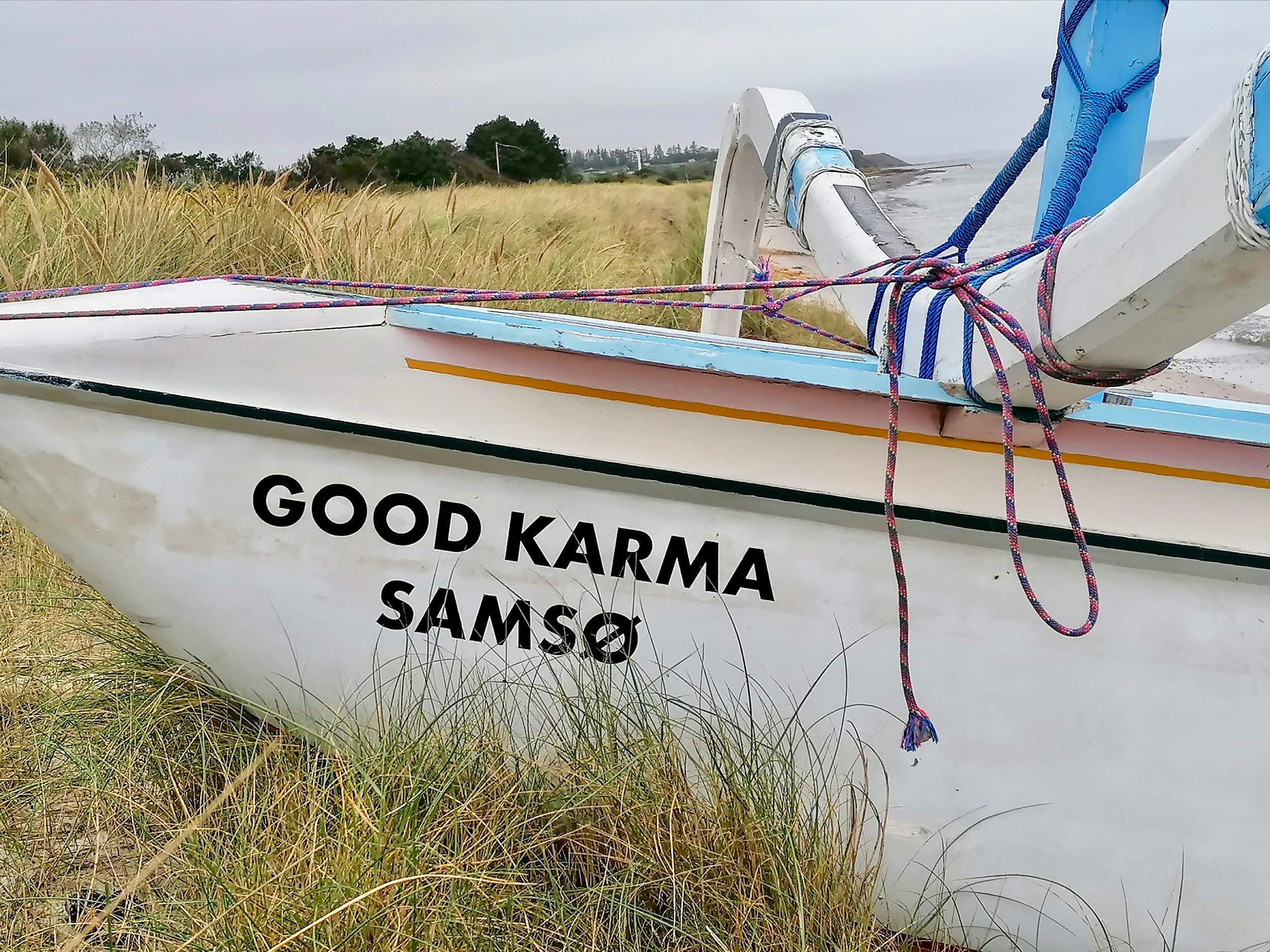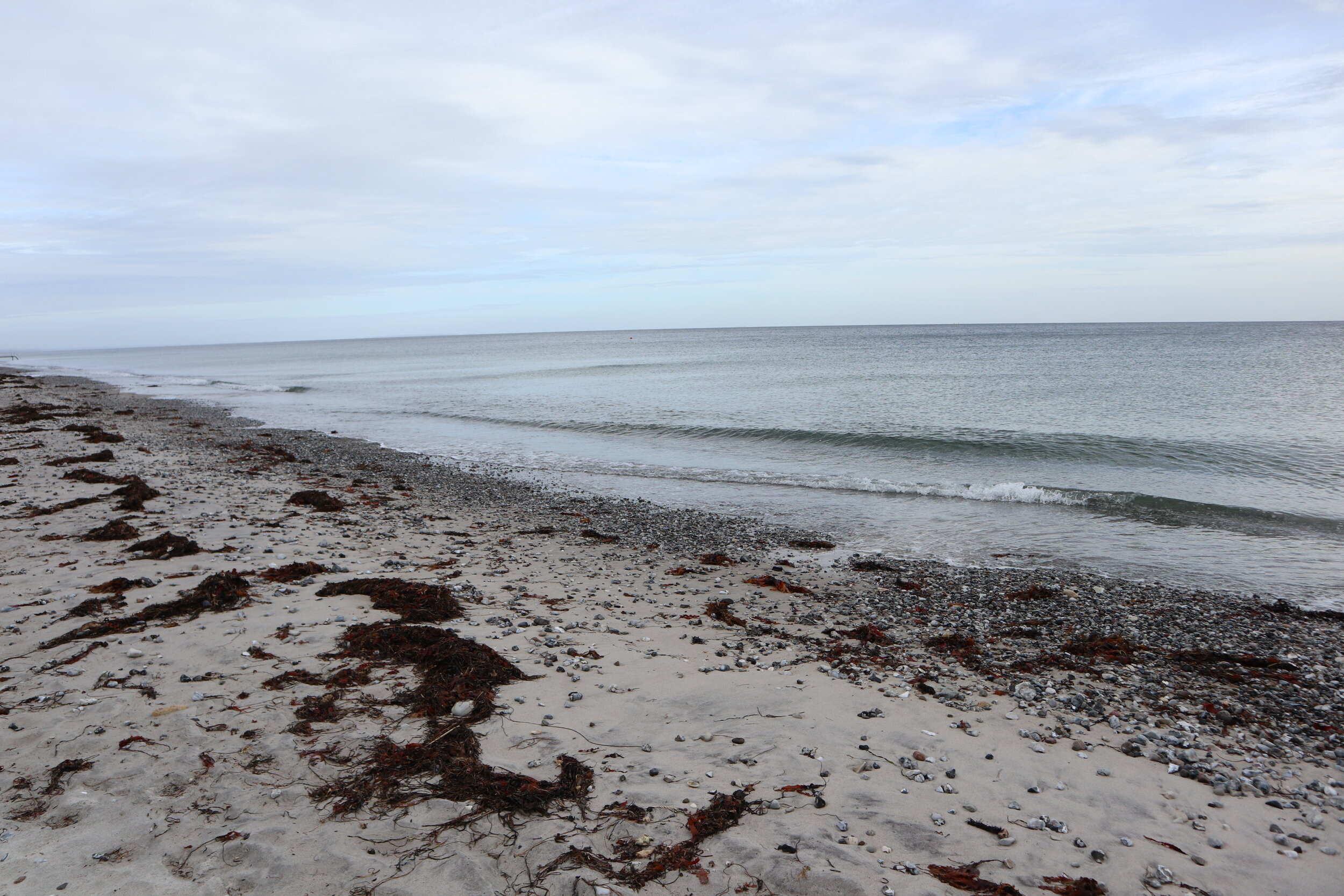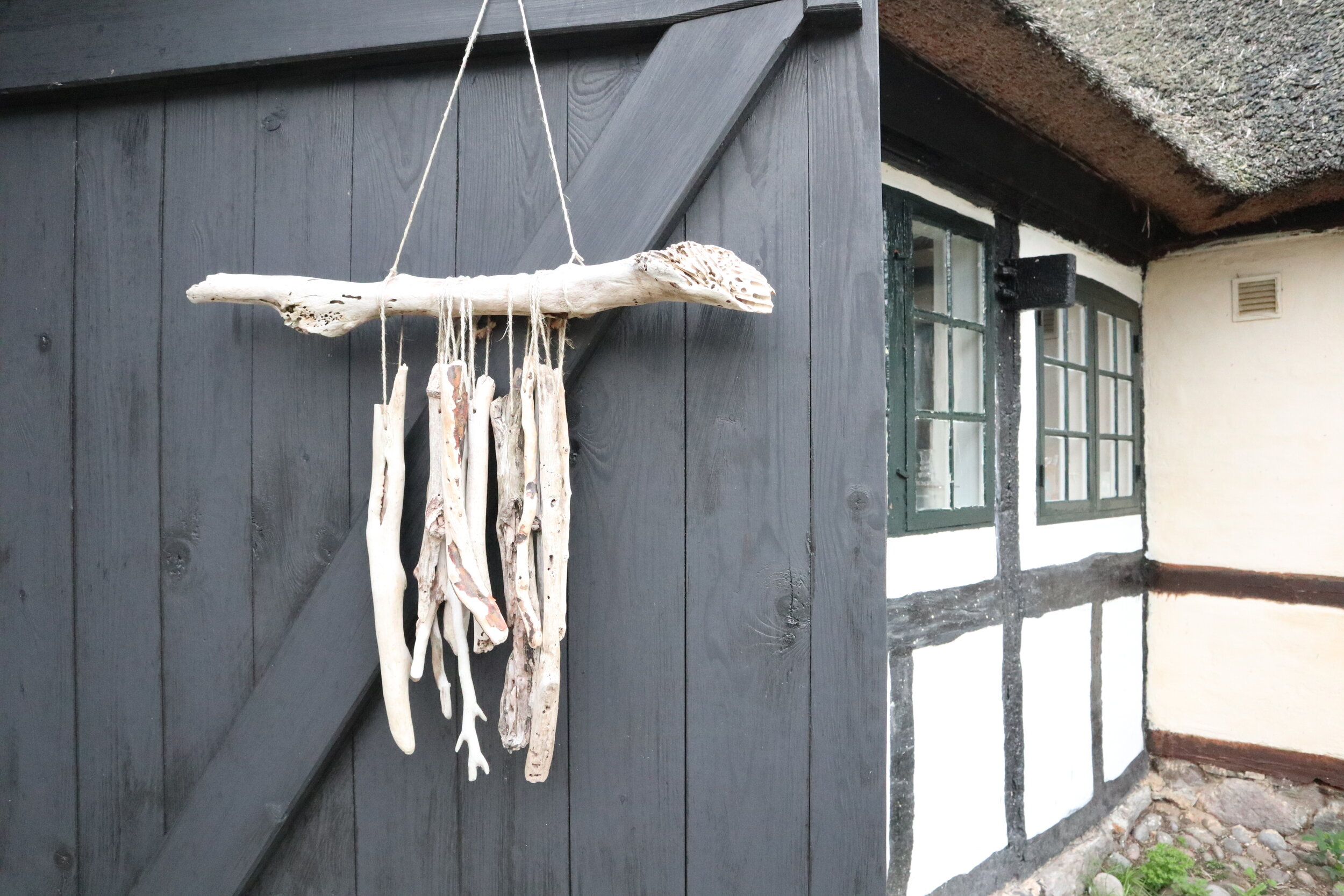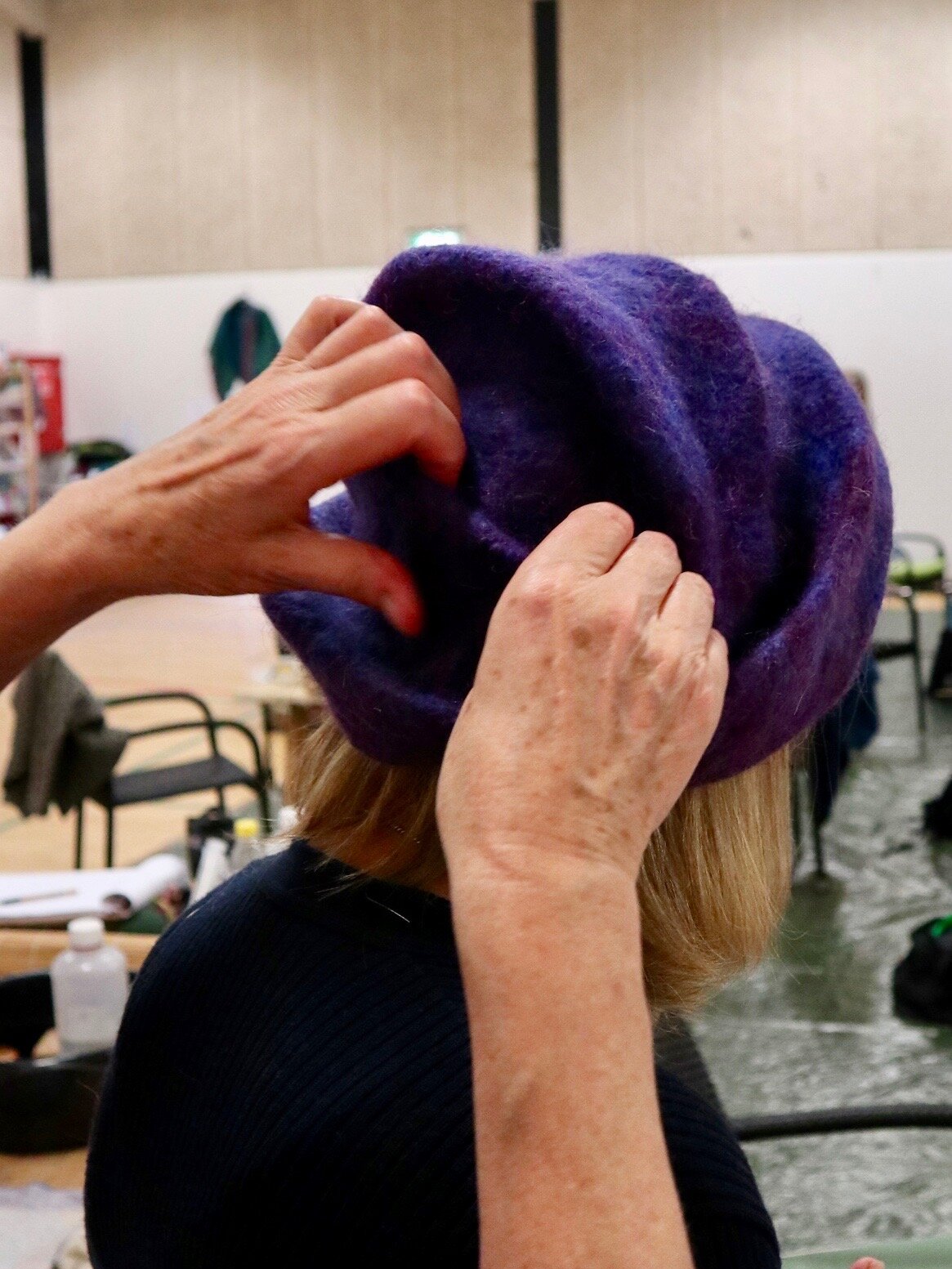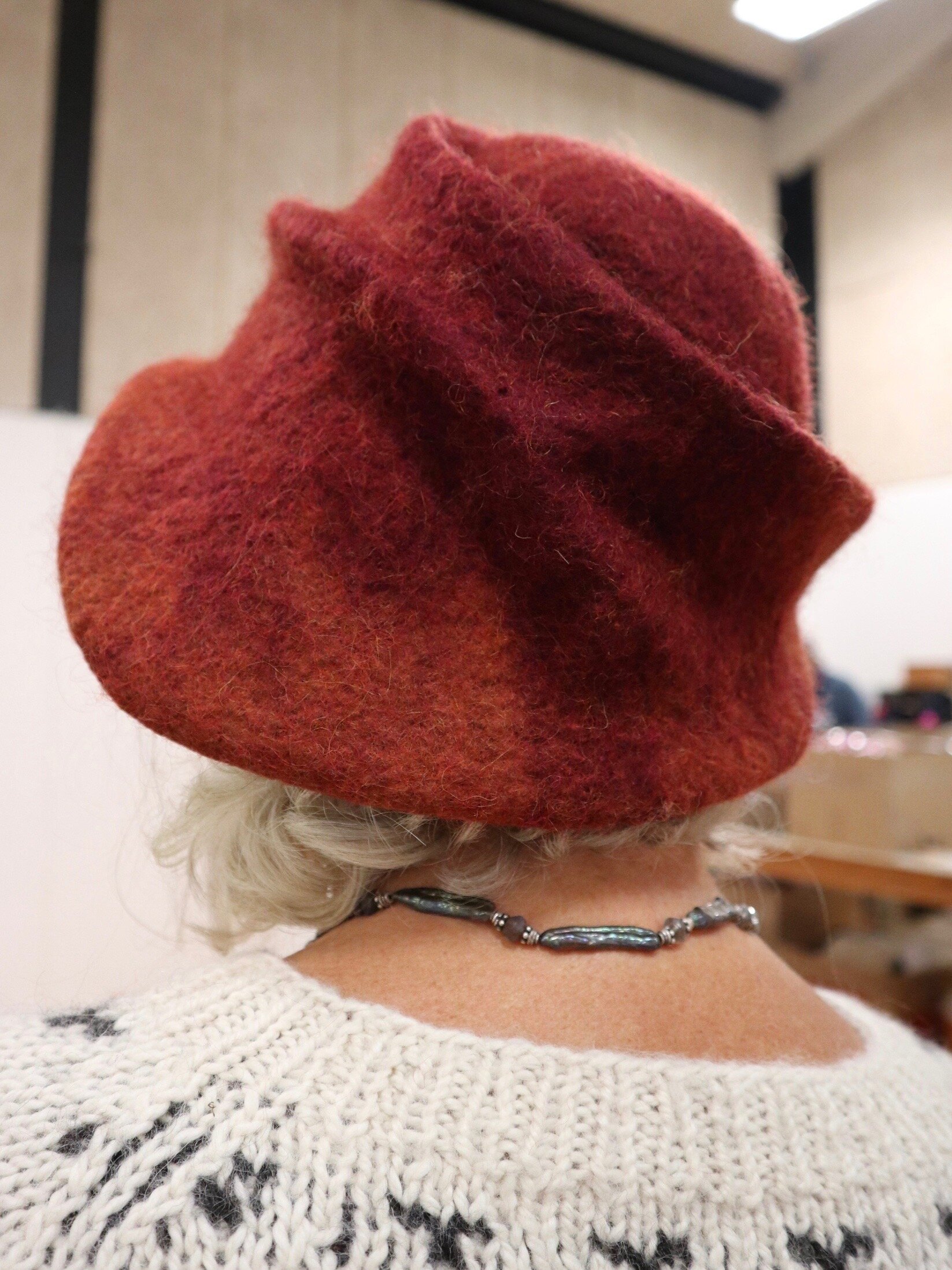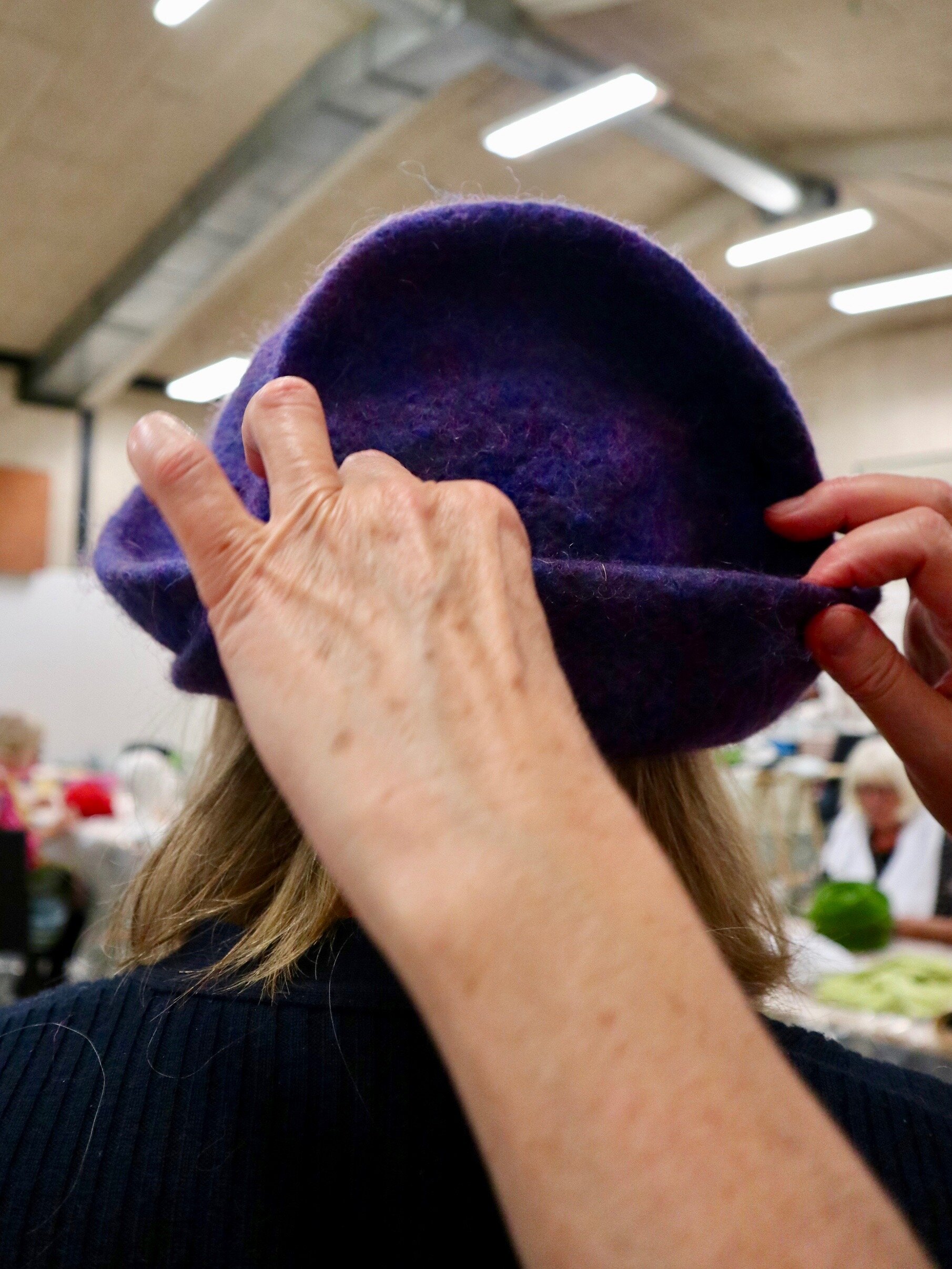Blog: Where the Vikings gathered
Where the Vikings gathered
At times, the world feels like a small village. Technology is keeping us connected, but once in a while, it is magical to cross borders and fly overseas to connect in real space and time. I usually thrive on such experiences. I need them to get inspired and develop new ideas. By the time I packed my tiny suitcase, I was over the moon. A new adventure was in the making. I am just about to fly to Samsø, a small Danish island, 15 kilometers off the Jutland Peninsula. This would be my first in-person teaching experience, since the beginning of lockdown. Lucky me!
Soon after I arrived in Denmark, I learnt that during the Viking Age, Samsø was used as a special meeting place. Because of its central location, the Vikings held important gatherings on this island, and now we are just about to continue this tradition! The Annual Meeting of the Danish Felt Makers Association, GRIMA, was scheduled to take place in this historical place and I was one of the invited tutors.
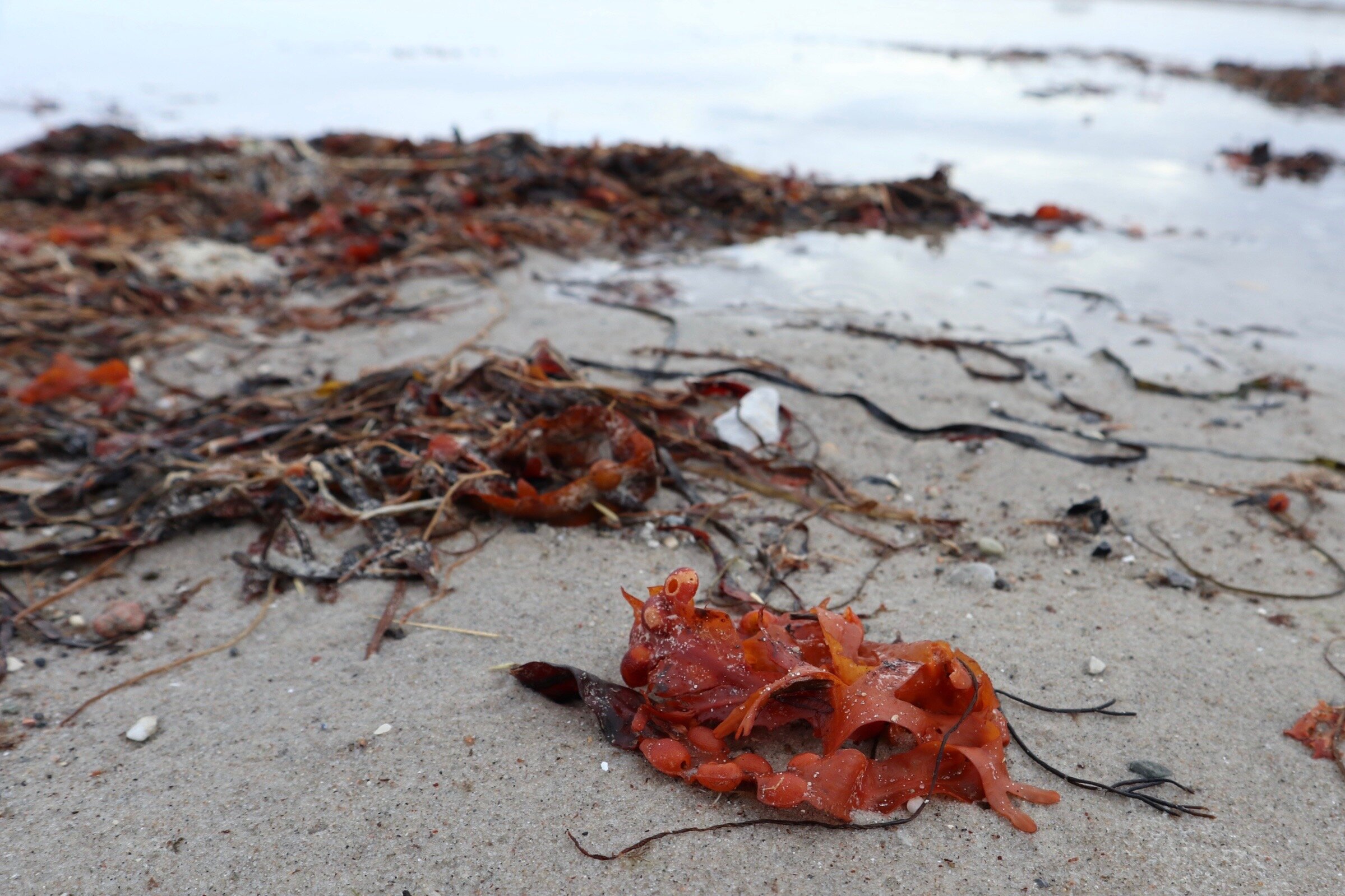
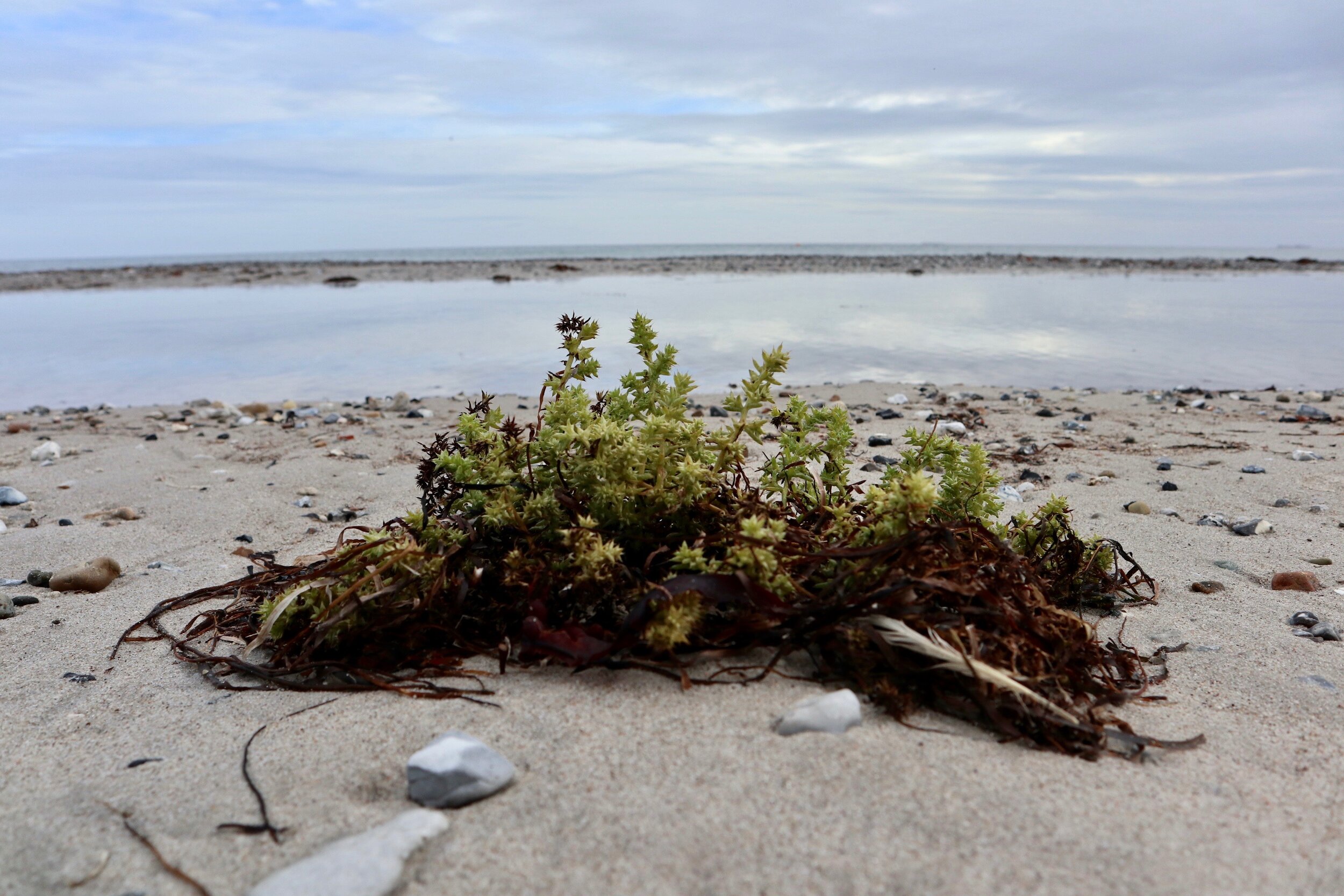

Friday
The workshop started on a Friday evening. I was glad to finally be able to meet my students and learn a little bit about their background in textile art and felt making. I got out the hats I brought with me and asked the ladies to try them on. They looked so beautiful in them! Hats are great conversation starters. Trying them on is an informal, fun way to get to know each other! As everyone was having fun, I quietly stepped into my teacher role. I am a passionate advocate of the fact that hat making is a form of art. The craft behind it is an indispensable and crucial part to learn, but it is much more than that. Hats are like poetry: they only strike a chord when the composition is perfect. The devil is in the details. The shape has to be in perfect harmony with the proportions of the face and posture. A stunning design brings out and intensifies the unique beauty of a person. This was a great opportunity for me to give a little demonstration on this topic. There is just so much to unpack here. At the end of the evening, each participant chose a design that spoke to them the most. They would use this design as their foundation to build upon and create their own original hat.
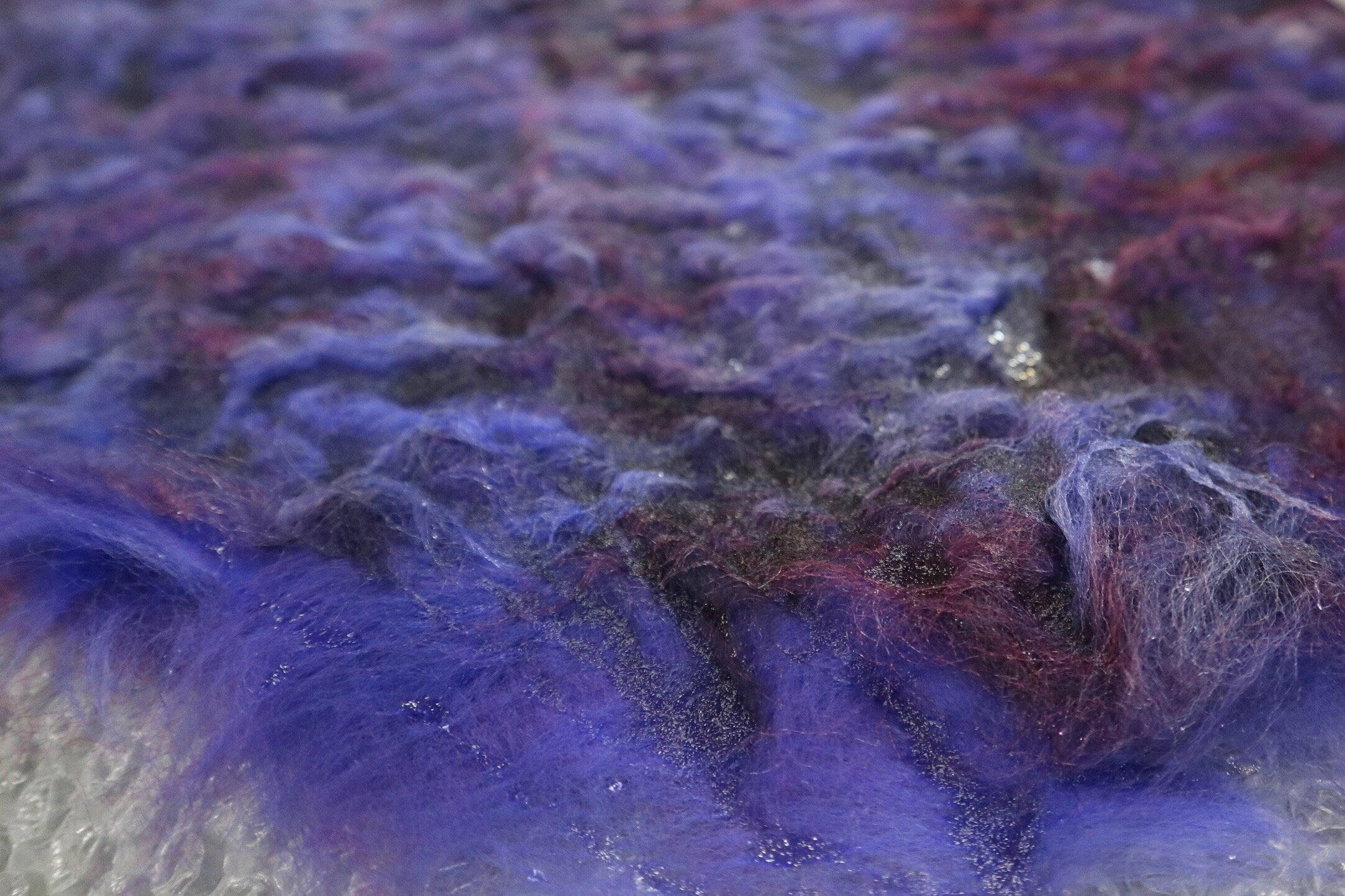
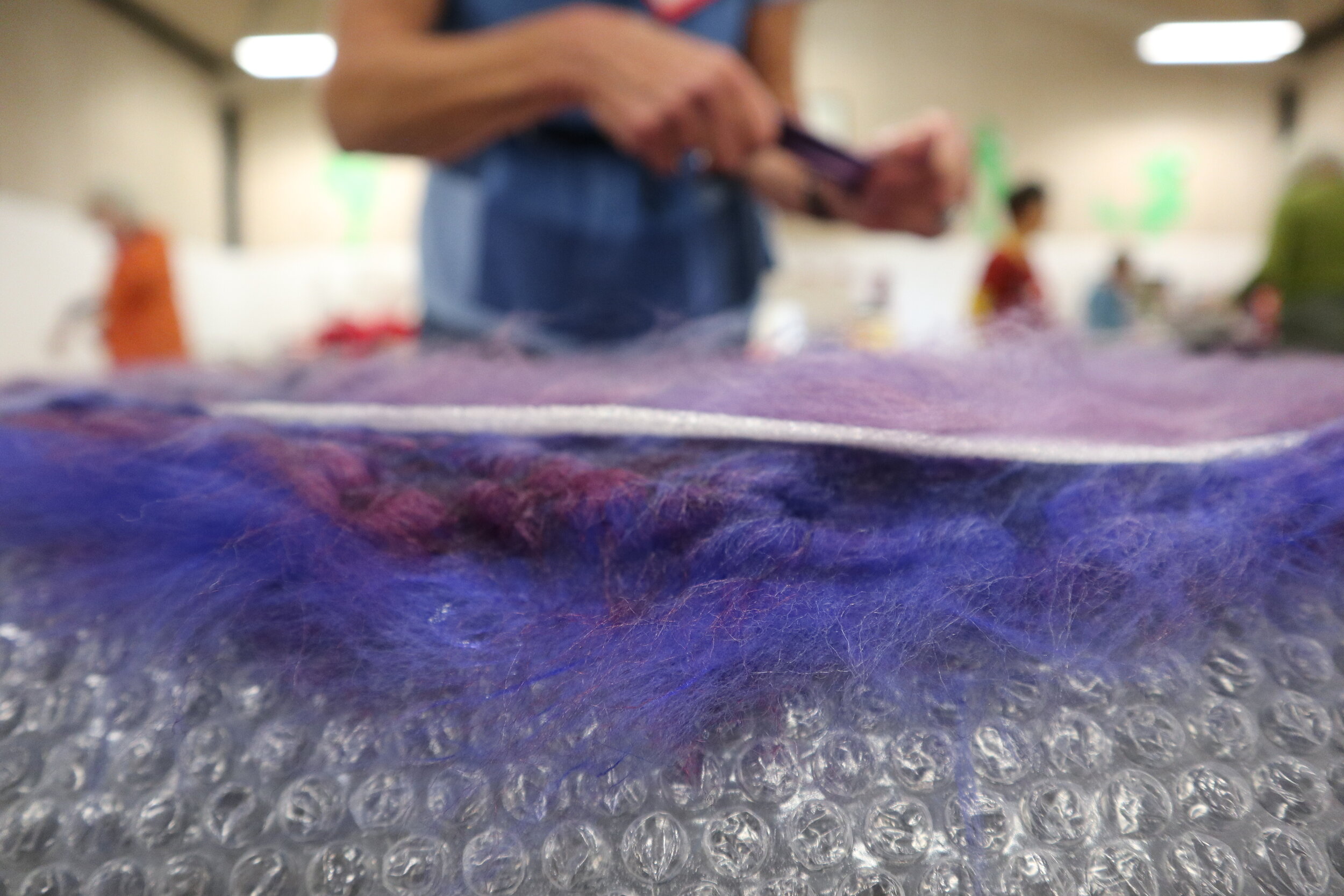
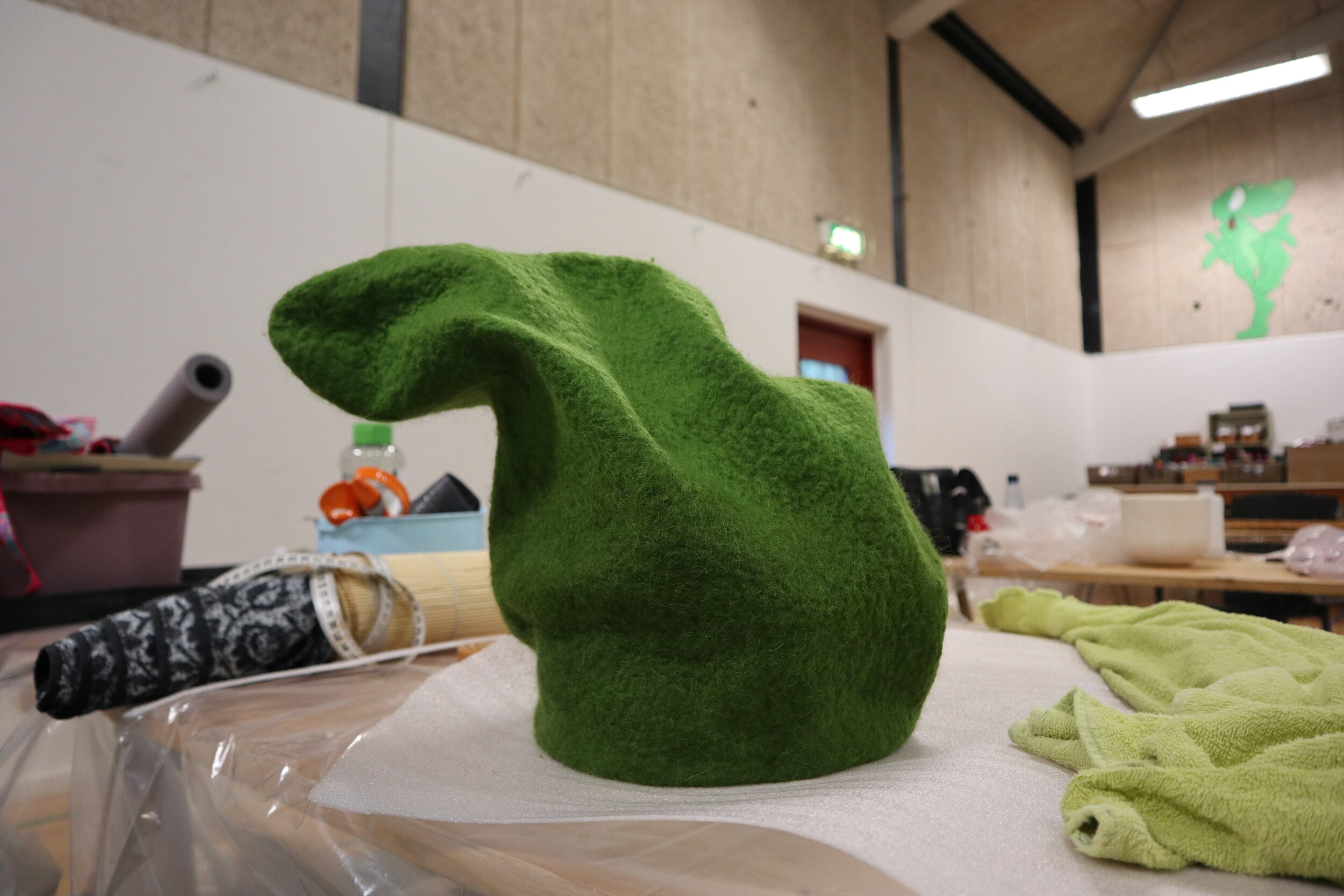
This particular way of making felt is very different from when one is making garments. Feltmaking is a rich and complex system of diverse making methods. It requires more than the mastery of just one particular set of skills.
It is not easy to switch from one particular type of feltmaking to another. Some of the differences seem minor but they affect the outcome significantly. I learnt during my teaching experiences, that you cannot take it for granted that your students are familiar with a particular method, even if they are experienced makers. That is why I like to start with the basics and build it up from there.
The felt we are making today requires a specific amount of humidity and must be kept at a certain temperature. The timing between the different stages is also crucial. The thickness is difficult to control and one needs to develop a special feeling for this to get it right. The texture of the felt should be even, dense, but not too thick. I do notice that my class is struggling with all of these issues. There is a lot they need to take in. But they stay open, curious and they are doing a great job! Hats off to these ladies for their resilience and spirit!
When a group of people with a different background of felt making are making felt hats for the first time, you can rest assured that things will go wrong. Luckily, feltmaking is a slow, organic process and you can reverse the damage if you act fast. It is easy to drown the felt in too much soapy water, which will prevent the fibres from interlocking. If water stays too long in between layers of fibre, the situation will get even worse. Today, I get my chance to demonstrate my skills in damage control. It is completely fine for everyone to make mistakes today, except for me, of course. Making mistakes is a great way to learn new skills and I am glad that I can demonstrate how to avoid big disasters
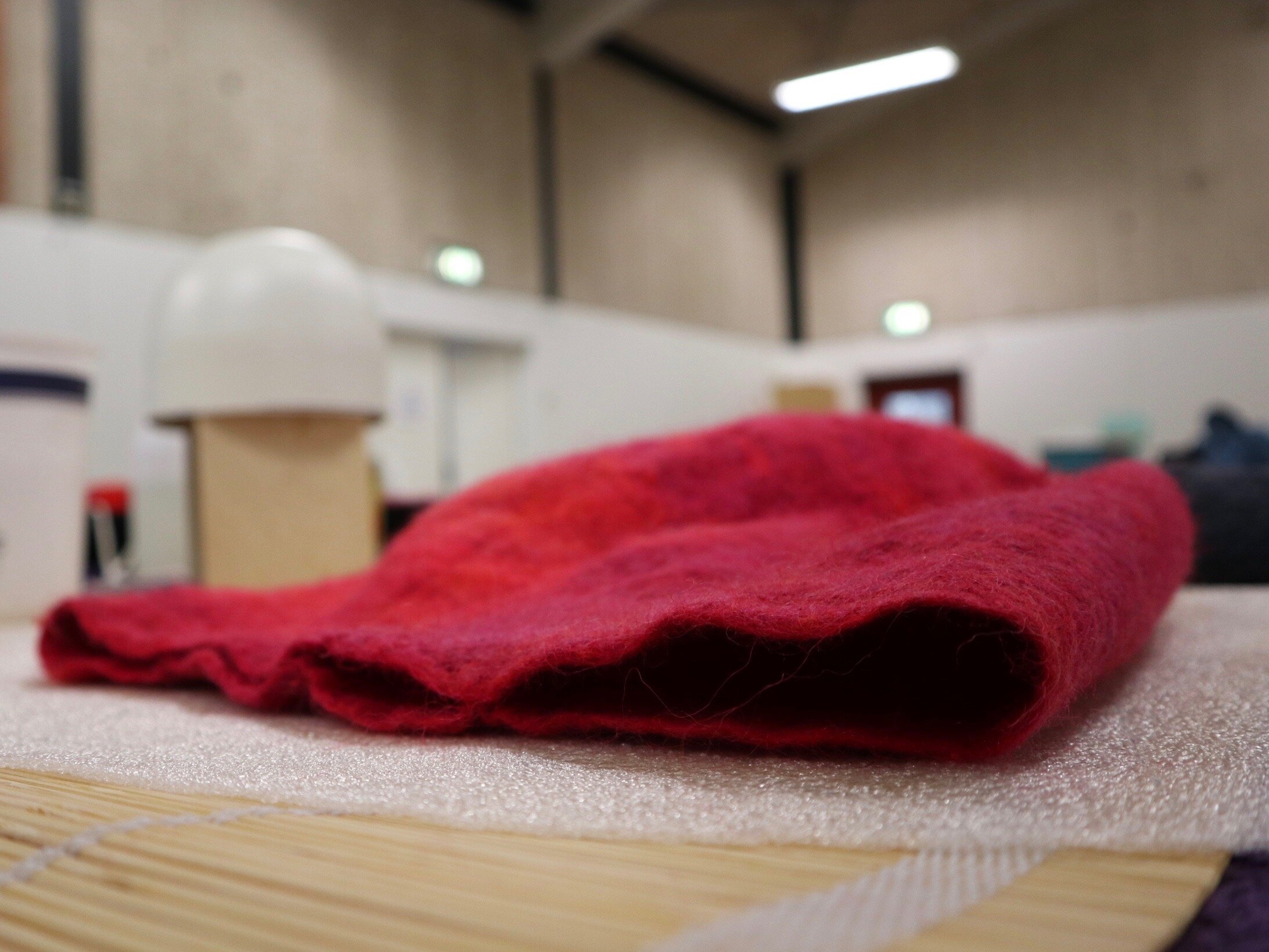
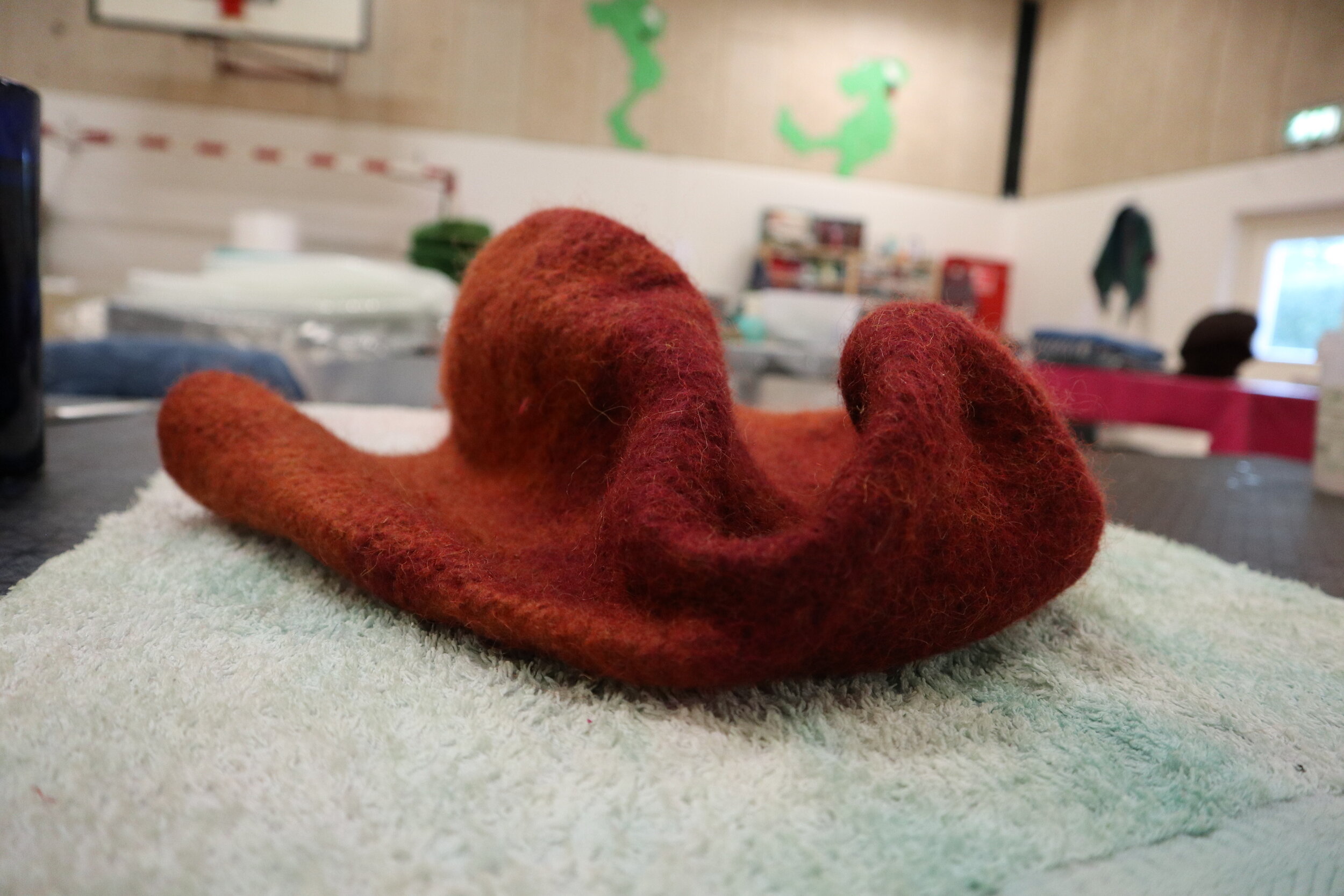
Sunday
It is Sunday morning and we have a few hours to finish the hats. This is the most thrilling and creative part of the workshop. The intense and laborious felting process is finally bearing fruit.
When I arrive, I see that my ladies just could not wait for the class to start, they are already busy shaping. How wonderful to see this! I see hands fumbling through folds, squeezing, stretching the fabric.
This soft and sculptable, dough-like material is so inviting, it is hard to resist sinking your fingers in it! It brings out the sculptor, the artist in everyone. I see that my students are enchanted by it and completely absorbed in crafting their stunning hats! They follow their intuition and wherever the material takes them. I previously showed them some sculpting and folding techniques, which they are now applying to their felt to create free-flowing shapes.
I realize that I have to step back now and not interfere with their artistic flow. At this stage, my role shifts from being a teacher to being a facilitator for this unique creative process. Some people come to me for assistance, and as I am helping them, somewhere else in the classroom fascinating new hats are materializing! It all happens so fast, I wish I could press a pause button somewhere and be able to see what everybody is doing.
The last two hours of the workshop flies by too fast. It is a small miracle what is happening here: wearable pieces of art are materialising from just a pile of wool fibres. Hats are extraordinary objects. They bring so much lightness, playfulness and joy into the lives of those who wear them, make them, or both. Hats made from handmade felt have a special charm. the vibrancy of colours, the fascinating texture, the soft and natural feeling of the wool…is magic.
My ladies are finishing their hats now. Once their hats are dry, the shape will be constant. My adventures on this island are coming to an end but theirs is just beginning. Creativity needs time to grow. Some of them will re-wet the hat they made today and will reshape it sometime in the future. New ideas will visit them, and it will be hard to resist experimenting with different designs! Once the felt is wet again, it can take on an infinite number of shapes. This can be the beginning of a new addiction!
We all gather in the yard to admire each other’s hats in the sunlight. Vibrant colours and intriguing shapes fill the yard. It will be hard to say goodbye to this open-minded, curious and hard working group of people. I am filled with gratitude and inspiration. Thank you all!
It is so nice to meet other artists, tutors and craftswomen. What a great idea to organize a meeting on such a beautiful and peaceful island. For most of us feltmakers, nature is such an important source of inspiration, and here, it is all around us.
There were few distractions on this small island, except for the countless beaches and an ancient breed of sheep which sheds its wool!! Unfortunately, I haven’t seen any of them, probably because they went into hiding when they sniffed out that a group of crazy felt makers wanted to put their hands on their wool. I can’t blame them.
I usually get quite anxious by the fact that I do not know who is coming to my workshop and what their main interest and level of felt making would be. This time, I could scratch this dilemma off my list, as Danish felt makers, together with other Scandinavian felt makers are considered to be pioneers of this art. The ancient Nordic tradition of felt making developed parallelly with the Central Asian nomadic felt tradition.
Saturday
I woke up early on Saturday morning. I did not want to miss the beautiful island sunrise. There is a little ritual I like to do before a class starts. I search for a peaceful and quiet place to sit in silence and I visualize what exactly it is that I would like my students to achieve on that particular day.
Yesterday, I learned from my participants that they mainly focus on making garments. This means that they are used to making felt that is delicate, fine and extremely thin. What they are just about to dive into will be a completely different experience for them. We will make felt which bears less resemblance to ‘textile’ and has more characteristics of clay or sculpturing material.
The felt my class will make today will be strong and dense to withstand pressure, hot steam and a lot of stretching. We are literally going to build up a strong and flexible structure of fibres by stacking cobweb thin layers of wool hairs on top of each other.
We will use fine fibres to fill up the space between a coarser type of fibre to achieve an even and strong structure. When the felt is ready, the coarser fibres will serve as a stiffening agent. Felt made in this way, once theydry, will keep its shape forever without the addition of artificial stiffening agents.
Each participant created their unique colour effects in the felt by mixing different coloured fibres. This will produce fascinating effects when the felt is ready. It is obvious to me that these ladies have a special talent for this. Can’t wait to see the results!
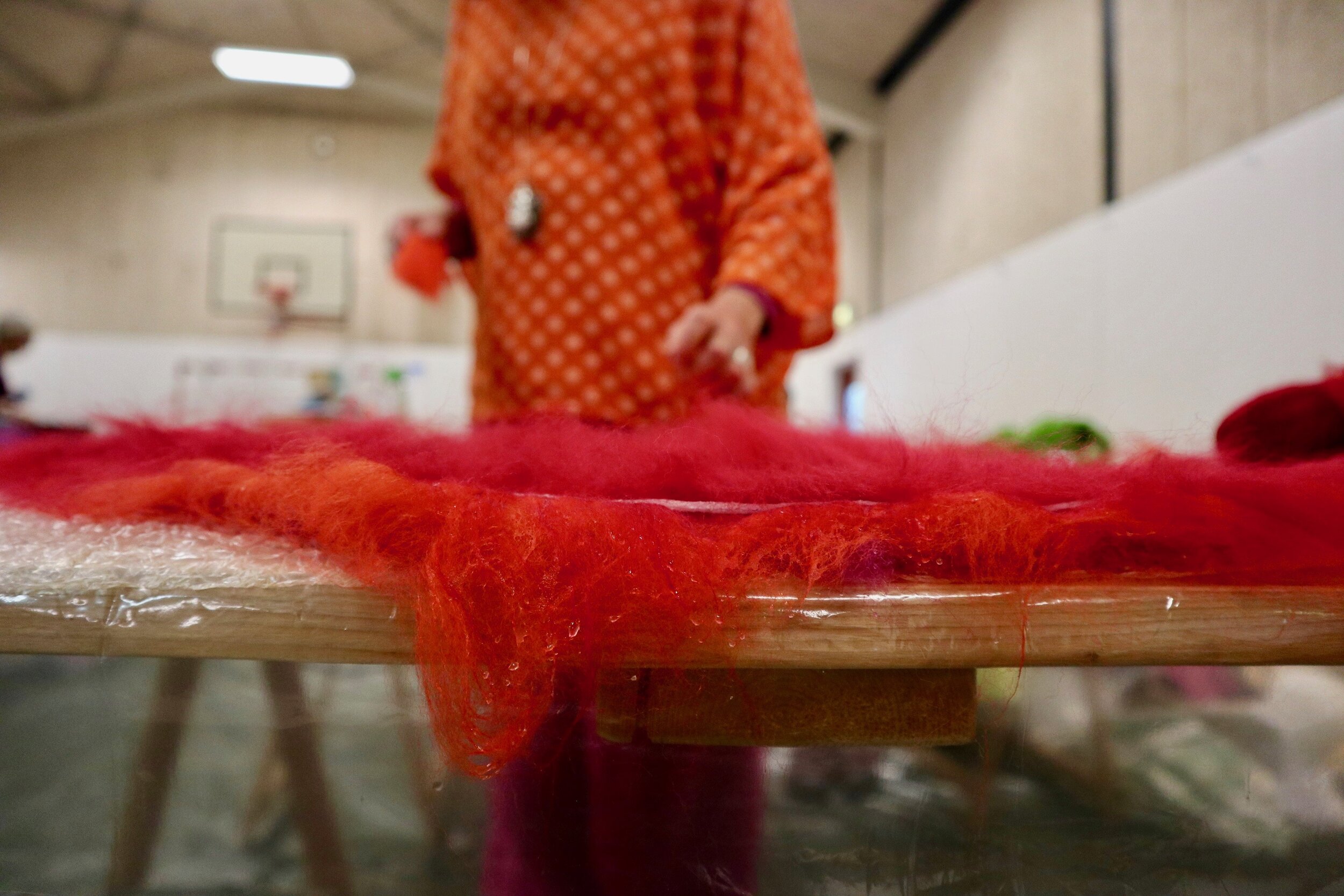

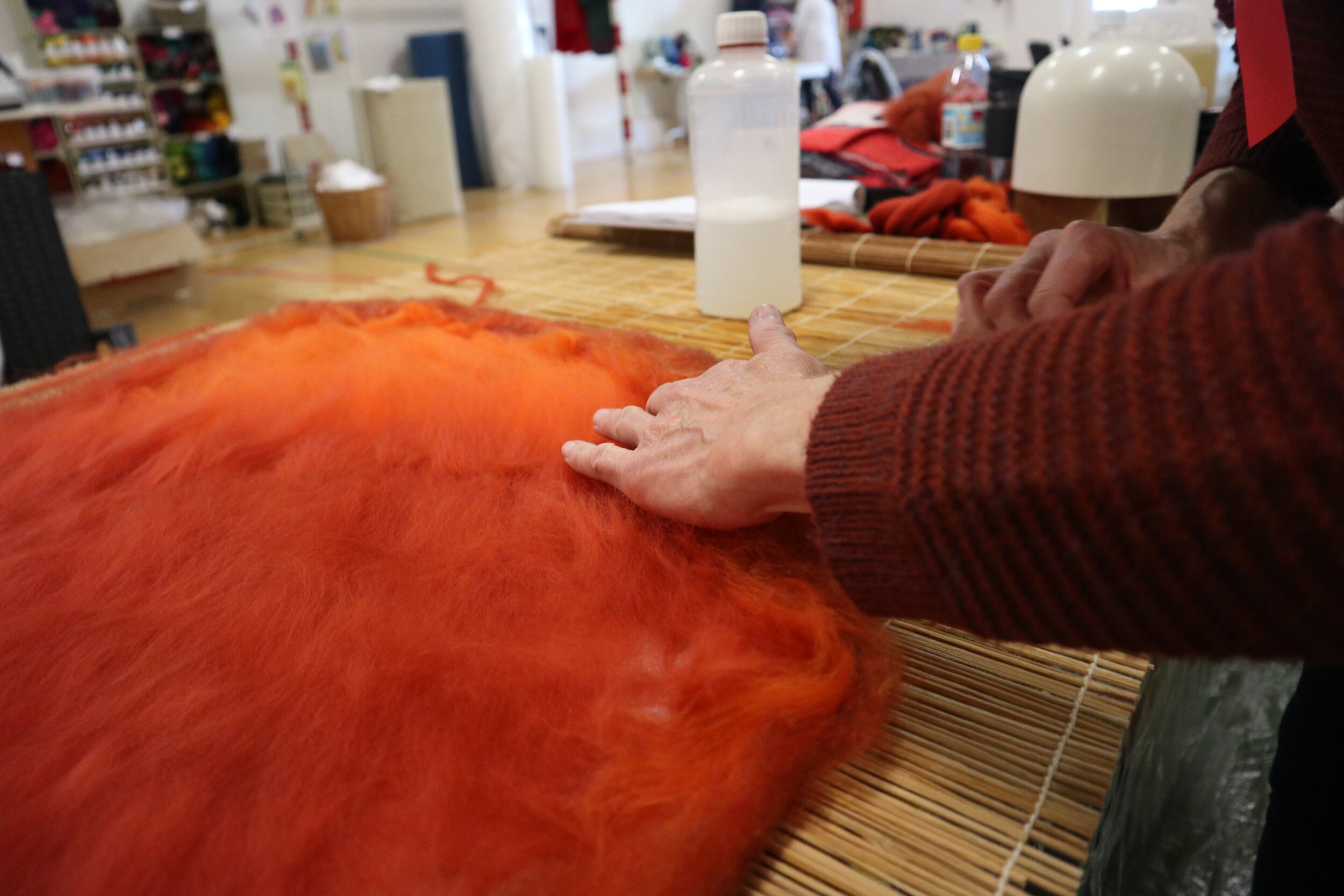
By the end of the morning, the felt can be removed from the template. This formless, limp pile of fabric will be a delicate, elegant and beautifully shaped hat in the end.
We start shaping the felt by shrinking it further down. My class is enjoying this close physical contact with the material. It is a playful and fascinating process. I know of no other material which is created entirely by the touch of human hands, out of almost nothing, except a pile of loose wool. No instruments are used. The touch of the maker’s hands causes an immediate physical response in the outer layers and inside the felt. It changes in texture and density with every touch. The feltmaker must be able to feel these changes and keep control over the material during the entire process.
I do worry about the delicate hands of my students who are used to caressing silk and soft fibres. They have been working so hard now for hours and already some raw and bleeding spots are showing on their hands. Nevertheless, they keep going. I know this feeling so well, at this stage it is hard to let go of the material. I am impressed by the resilience and strength of some of these fragile-looking, delicate women. The reward is showing already, the shape starts to materialize under their hands. We stop to admire the results for a second, the texture, the beauty of the blended colours show already beautifully.
The exciting thing about this stage is that the contours of the shape are already visible, but one can still go in many directions from here. Some of the ladies are already trying the felt on themselves, they are standing in front of the mirror. The solidity and flexibility of the felt surprised them. It is already easy to form and they are experimenting with different shapes.
These shapes are not yet finite, lines, folds are still crooked and the felt is fuzzy. Tomorrow they will work on this and will tidy up these details!
At the end of the day, everyone leaves her half-shaped felt lying on the table. They look like small furry animals curled up peacefully, waiting for their owner to return the next morning.
